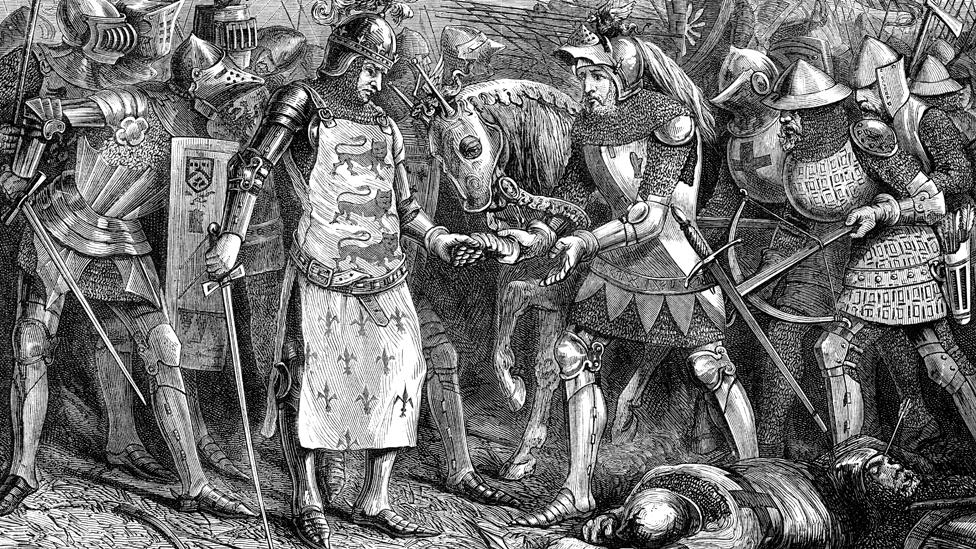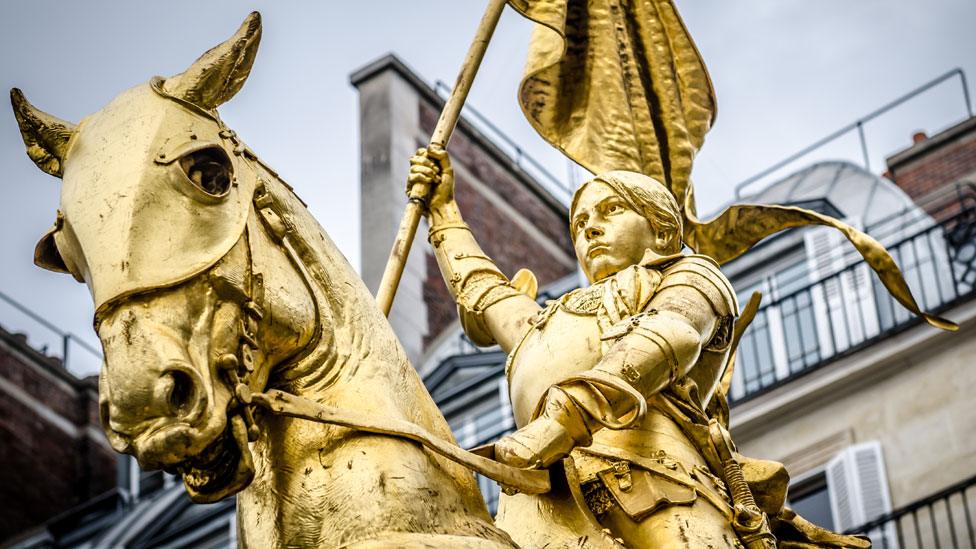England's first 'prisoner of war' discovered
- Published

The earliest use of "prisoner of war" in England appears after the Battle of Poitiers, fought in 1356
The earliest known use of the term "prisoner of war" in England has been discovered by a historian at the University of Southampton.
Court documents from 1357 show the term first used for the Count de Ventadour, captured at the Battle of Poitiers.
"It's possible this early use of the phrase was prompted by the very large number of soldiers captured at Poitiers," says Dr Remy Ambuhl.
This suggests a "new phrase linked to a new status", says Dr Ambuhl.
But Dr Ambuhl says his research has shown that the legal "rights" attached to a medieval prisoner of war were not about protecting the captured soldier.
Protecting property
Instead, this was about an "economic status", protecting the property rights of whoever held the prisoner.
The historian says the origin of the phrase "prisoner of war" is completely different from modern ideas of international rules governing the treatment of captured soldiers.

Joan of Arc, the first woman designated as a "prisoner of war", was not spared execution
Medieval warfare had its own international market in the sale of prisoners, with such ransoms becoming a lucrative source of income for soldiers.
The designation of "prisoner of war" status gave the "master" or owner of the prisoner legal protections over what had become valuable commodities.
Dr Ambuhl says the term was first used as an assertion of private, financial rights, with later court cases also using the term "slave" to describe the relationship.
This first appearance, earlier than any known previous records, appears in 1357 as "prisonnier de guerre", using the Anglo-Norman language used in 14th Century courts.
Bernard, Count de Ventadour, who is now England's first known legally identified "prisoner of war", had been captured in France the previous year at Poitiers, one of the key battles of the Hundred Years War.
He had been "owned" by Lord Burghersh, a close adviser to Edward, the Black Prince, and had been bought for £5,000 by King Edward III.
To put that into context, the amount raised by taxation annually would have been about £40,000.
The Count de Ventadour became part of negotiations over the ransom paid for the return of King John II, the French king captured at Poitiers.
By 1360, four years after the battle, he appears to have regained his freedom.
Executions
The research, published in the journal English Historical Review, also explains how people labelled as prisoners of war could be killed.
The most famous example, says Dr Ambuhl, was the French heroine Joan of Arc, who was legally recognised as a prisoner of war but was executed by the English.
The historian says that she could be the earliest known designation of a female prisoner of war.
But this did not give her any rights to special protection and did not save her from being burned at the stake in 1431.
Dr Ambuhl says the concept of "prisoners of war" being different from other prisoners was built on "economic foundations" - and that expectations of fair treatment are a much more modern interpretation.